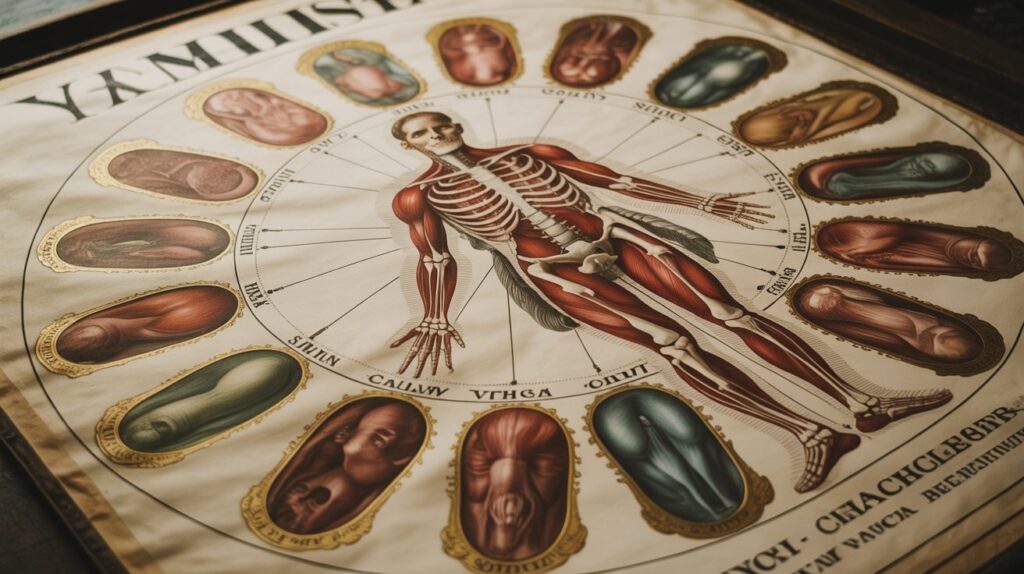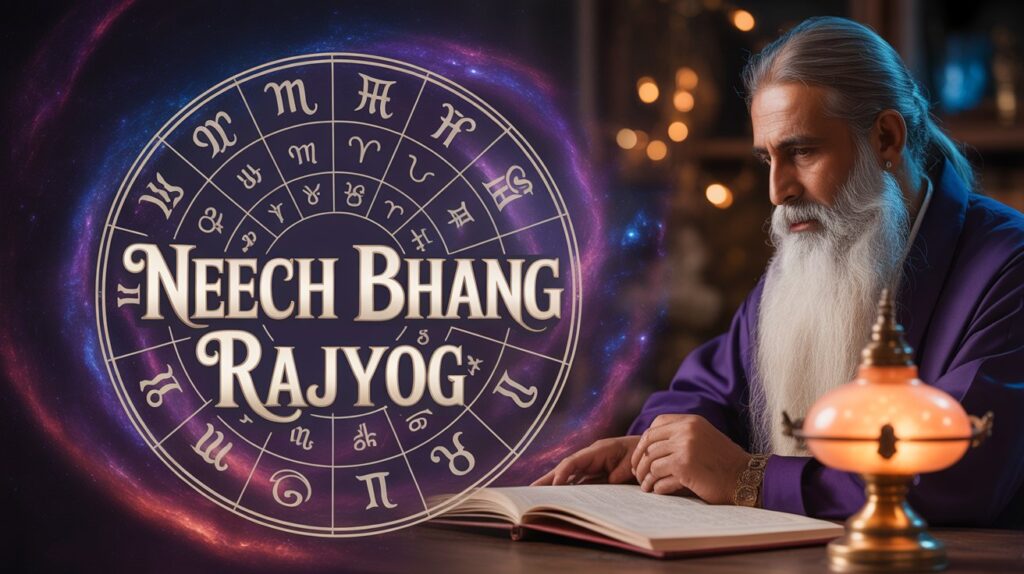The traditional Hindu astrology is known as Vedic Astrology. It is an intellectual science or divine science. The traces of Astrology can be found in the Vedas, Puranas, the Mahabharata & Ramayana. Some of the greatest names in Astrology are – Maharshi Parasara, Varaha Mihira, Mantreswara, etc.
Vedic Astrology is one of the greatest and largest sciences in the world, and it is stated that it is not possible to learn the entire science of Vedic Astrology by heart in one birth. However, if we want to segregate the five basic steps in the way of learning Vedic Astrology, these are broadly as follows –
(i) Knowledge of Planets and their Characteristics.
(ii) Knowledge of Rashi or sign and their Characteristics.
(iii) Knowledge of Houses in a Horoscope and their Characteristics.
(iv) Knowledge of Nakshatra.
(v) Knowledge of Dasha and Transit.
(i) Planets
In Vedic Astrology, the Seven (7) Planets of our Solar System are considered. These are Sun, Moon, Mars, Mercury, Jupiter, Venus, and Saturn. Although the Sun is a star according to astronomy, it is taken as a planet in Astrology. Apart from these, there are two shadow planets called Rahu and Ketu. The planets like Uranus, Neptune and Pluto are not considered in Vedic Astrology as these planets are far away from the earth and have very little influence on earth. In brief, the characteristics of planets are as under –
Sun – It is a karaka for the soul, leadership, attitude, authorities, father, king etc.
Moon – It is the karaka for Moon, mind, thoughts, water, liquidity, Mother etc.
Mars – It is the karaka for Brother, Army, blood, Land, Aggression, Fight etc.
Mercury – It is the karaka for intelligence, communication, mind, neuro, calculation, commerce & banking etc.
Jupiter – It is the karaka for Astrology, Guru or Teacher, progeny, wealth, insight, prosperity, optimism, spirituality etc.
Venus – It is a karaka for wife, beauty, sex, creativity, luxury, materialistic, music, fragrance, artistic quality etc.
Saturn – It is the karaka for downtrodden people, sacrifice, hard work, principle, delay, hard labour, justice etc.
Rahu- it is a karaka for illusion, desires, ambition, pursuit of material gains, manipulation, other caste or religion etc.
Ketu- It is a karakas for detachment, Moksha, spiritual liberation, enlightenment, renunciation, wisdom, and confusion etc.
RASHI or SIGN
In the geocentric system, all planets are moving around the 5 Degree north and south belt of the equator, circling the earth – this circular band of 10 degrees is called the Zodiac. The entire 360 degrees of the Zodiac has been divided into 12 compartments of 30 degrees each. Every 12 compartments is called a Rashi or sign. The brief details of the Rashis are as under –
(i) Aries(00 -300) – Fiery, Male, energetic, bold, optimistic, impulsive, Aggressive Rashi of Mars.
(ii) Taurus(300 -600) – Earth, reliable, patient, comfort, perfection, practical, Female, and rashi of Venus.
(iii) Gemini(600 -900) – Airy sign, male, curious, adaptable, communicative, social, and the rashi of Mercury.
(iv) Cancer(900 -1200) – Watery sign, female, nurturing, sensitive, intuitive, emotional, and rashi of the Moon.
(v) Leo(1200 -1500) – Fiery, Male, confident, charismatic, passionate, lover, Rashi of Sun.
(vi) Virgo(1500 -1800) – Earth, Female, analytical, detail-oriented, helpful, perfect, and Sign of Mercury.
(vii) Libra(1800 -2100) – Airy, male, diplomatic, fair-minded, charming, balanced and the sign of Venus.
(viii) Scorpio(2100 -2400) – Watery, female, intense, passionate, resourceful, strong will, transformative nature, and sign of Mars.
(ix) Sagittarius (2400 -2700) – Fiery, male, optimistic, adventurous, freedom-loving. knowledge, new experience, and the sign of Jupiter.
(x) Capricorn (2700 -3000) – Earth, female, ambitious, disciplined, responsible, natural leader, hard to achieve goals, and sign of Saturn.
(xi) Aquarius (3000 -3300) – Airy, male, original, independent, humanitarian, visionary, passionate, and sign of Saturn.
(xii) Pisces(3300 -3600) – Watery, female, compassionate, deep thinker, artistic, dreamer, intuitive, and the sign of Jupiter.
HOUSES
The rising sign at the time of birth is called Ascendant or 1st House and likewise 12 signs occupy the 12 Houses. Each house has its own significance – these are as under –
1st House – Body, Personality, character, Head, Hair, complexion etc.
2nd House – Family, language, jewelry, face, Wealth, Food, Eye etc.
3rd House – Valour, Courage, sibling, hand, Short Journey, Ear etc.
4th House – Home, Mother, chest, vehicle, peace, Land, Joy etc.
5th House – Education, Child, Share Market, love, Mantra, Puva Janma etc.
6th House – Rog, Rin and Ripu, Job, hard work, competition, Enemy, Debt etc.
7th House – Marriage, Spouse, daily income, Business, Partnership, Other people etc.
8th House – Longevity, Secrecy, underground, heritage, sudden events etc.
9th House – Father, Guru or Teacher, fortune, Long journey, Higher Education etc.
10th House – Profession, name, social, career, Karma, Fame etc.
11th House – House of Gain, desires, social connections, friends, Elder brother etc.
12th House – Foreign country, investment, isolation, Prison, Hospital, expenditure, Mokshya etc.
Nakshatra
The entire Zodiac of 360 degrees has been divided into 27 equal parts of 13 degrees 20 minutes each. Each part is designated as one Nakshatra. Apart from these 27 Nakshatras, there is one special Nakshatra situated between UttarAshada and Shravana. These 27 Nakshatra belong to 9 planets. Therefore, each planet has 3 Nakshatra. The details are as under –
| Ketu | 1. Ashwini | 10. Magha | 19. Moola |
| Venus | 2. Bharni | 11. Poorva Phalguni | 20. Poorva Ashadha
|
| Sun | 3. Kritika | 12. Uttar Phalguni | 21. Uttara Ashadha
21. Abhijit |
| Moon | 4. Rohini | 13. Hasta | 22. Shravana
|
| Mars | 5. Mrigshira | 14. Chitra | 23. Dhanistha |
| Rahu | 6. Ardra | 15. Swati | 24. Satavisha
|
| Jupiter | 7. Punarvasu | 16. Vishakha | 25. Poorva Bhadrapad
|
| Saturn | 8. Pushya | 17. Anuradha | 26. Uttara Bhadrapada
|
| Mercury | 09. Ashlesha | 18. Jyestha | 27. Revati
|
Dasha & Transit
At the time of the birth of a native, the placement of the moon in a particular Nakshatra is called Janma Nakshatra. Suppose, at the time of birth Moon is transiting through Shravana Nakshatra; therefore, the Janma Nakshatra of the native is Shravana, which is a Nakshatra of the Moon. This Janma Nakshatra decides the Dasha of the particular planet through which the native is going. In the present case, it is of the dasha of the Moon and followed by Mars-Rahu-Jupiter-Saturn-Mercury-Venus-Sun. The length of Dasha of each planet is different. These are as under –
Sun – 6 years; Moon – 10 years; Mars – 7 years; Rahu – 18 years; Jupiter – 16 years; Saturn – 19 years; Mercury – 17 years; Ketu – 7 years; Venus – 20 years.
This Dahsa period is called Mahadasha, which is further divided into smaller parts like Antar Dasha, Pratantar Dasha, etc. A planet gives results according to its lordship of the house in its Dasha/Anter Dasha period.
Dasha is related to a snapshot of planetary position in the zodiac during the birth of a native, whereas the planets are always moving. When these moving planets come to a particular position w.r.t. their snapshot positions, the actual events that take place in one’s life. The continuous movement of planets with respect to their original native placement is called transit. Transit does have the power to fructify any results, but it only acts as a catalyst for the initiation of the events that are already destined in one’s life as per their natal planetary position. Therefore, it can be concluded that the results of a dasha take place when a proper transit happens in the haven.
So, these are the first five steps for learning Basic Vedic Astrology.



